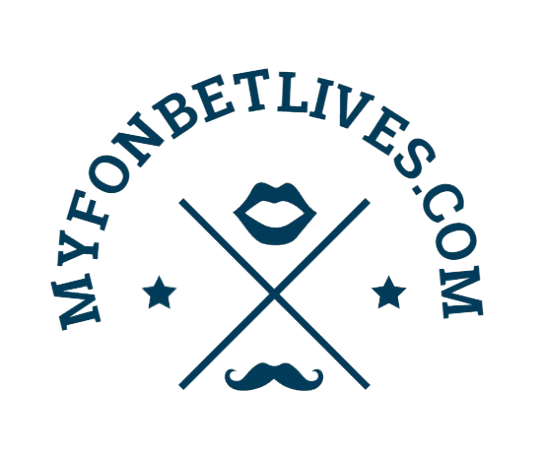Understanding Your Nutritional Needs
Recognizing individual nutritional needs is essential for crafting a suitable meal plan that promotes overall well-being. Nutritional requirements are influenced by several factors, including age, gender, lifestyle, activity level, and any specific health conditions that may be present. For instance, children and adolescents require higher proportions of certain nutrients for growth and development, while older adults might need fewer calories but a higher intake of specific vitamins and minerals. Gender differences also play a role; for example, women typically require iron in higher amounts during their reproductive years due to menstruation.
A critical aspect of personalized nutrition is the understanding of macronutrients, which include carbohydrates, proteins, and fats. Each macronutrient serves a distinct function in the body. Carbohydrates are the primary source of energy, while proteins are crucial for muscle repair and growth. Fats, despite their bad reputation, are essential for hormone regulation and the absorption of fat-soluble vitamins. Balancing these macronutrients according to individual preferences and goals, such as maintaining weight, losing weight, or building muscle, is vital.
In addition to macronutrients, micronutrients—comprising vitamins and minerals—are equally important for health. These nutrients support various bodily functions, including immune response, energy production, and bone health. It is essential to incorporate a diverse range of foods to meet these needs adequately.
Caloric needs vary among individuals depending on their activity levels and dietary goals. To establish an ideal daily caloric intake, one can use calculations involving the basal metabolic rate (BMR) and activity multipliers. Understanding these nutritional fundamentals allows individuals to develop a meal plan that aligns with their unique requirements, thus enhancing health and well-being.
Setting Your Goals and Preferences
Embarking on the journey of creating the perfect meal plan necessitates a clear understanding of your dietary goals and personal preferences. Identifying your objectives is crucial; whether your aim is weight loss, muscle gain, enhanced energy levels, or improved overall health, each goal requires tailored nutrition. Setting realistic and attainable goals fosters a sense of accomplishment, ensuring that your efforts are consistent and sustainable. For instance, rather than striving for an immediate drastic weight loss, consider setting a target of one to two pounds per week, which is more manageable and allows for steady progress.
Equally important is the consideration of personal preferences and dietary restrictions. A successful meal plan must align with your lifestyle choices, cultural background, and any health-related needs. Individuals following a vegetarian, vegan, or gluten-free diet should incorporate foods that comply with these requirements while still achieving their nutrition goals. This not only enhances compliance but also makes the process enjoyable and fulfilling. When customizing your meal plan, explore various recipes and food options that excite you, as variety can significantly impact your motivation to stick with your dietary regime.
Moreover, motivation plays a pivotal role in maintaining consistency. One effective strategy is to engage in meal prepping, which can alleviate the stress of daily cooking and promote adherence to your plan. Consider setting aside time once a week to prepare and package meals in advance. Additionally, sharing your goals with supportive friends or family can create a network of accountability. Tracking your progress through journaling or digital apps can also provide motivational boosts, enabling you to celebrate small victories along the way. By defining your dietary goals and preferences clearly, you pave the way for more effective and personalized meal planning.
Crafting Your Meal Plan
Creating a personalized meal plan requires a thoughtful approach that considers individual dietary needs, preferences, and lifestyle goals. To begin this process, it is essential to evaluate your nutritional objectives, whether they include weight management, muscle gain, or simply maintaining a balanced diet. This foundation will guide the structure of your meal plan throughout the day.
First, outline your meals across the day, typically aiming for three main meals and two to three snacks. It is helpful to incorporate a variety of food groups in every meal to ensure that you are obtaining a healthy balance of proteins, carbohydrates, and fats. For example, a breakfast might consist of oatmeal topped with fresh fruit and a source of protein, such as Greek yogurt or nuts. Lunch could include a lean protein like chicken or tofu, a variety of vegetables, and a whole grain such as quinoa or brown rice. Dinner should also complement this structure, favoring different protein sources and colorful vegetables to enhance nutritional value.
Next, portion control is crucial when crafting your meal plan. Learning the appropriate serving sizes can help avoid excess calorie intake while ensuring that you meet your nutrient needs. Utilizing common measuring tools, like cups and ounces, or intuitive methods, such as measuring by hand (e.g., a palm-sized portion of protein), can facilitate this process.
Incorporating seasonal ingredients can not only enhance the freshness and flavor of your meals but also encourage variety in your diet. Seasonal produce tends to be more affordable and may provide better nutritional value. Moreover, consider adjusting your meal plan based on your weekly schedule or social commitments; flexibility is key. Planning meals in advance means you can prepare in bulk, allowing for quick and healthy options during busier days.
Monitoring Progress and Making Adjustments
Monitoring progress is a critical component of any personalized meal plan. It allows individuals to assess the effectiveness of their dietary choices and make necessary adaptations to continue moving toward their health and nutrition goals. One effective method to track progress involves maintaining a food journal, where individuals can record their daily food intake, portion sizes, and associated feelings or energy levels. This practice not only heightens awareness of consumption but also highlights any patterns that may emerge, shedding light on potential areas for improvement.
Additionally, tracking weight changes offers another tangible metric to measure success. Weight fluctuations can provide insights into how well a meal plan is aligning with dietary objectives, whether that be weight loss, maintenance, or gain. It is important to recognize that weight is just one aspect of overall health, and it should be considered alongside other indicators of well-being, such as energy levels, mood, and physical fitness. Regular self-assessments can aid in adjusting nutrition strategies as needed.
Monitoring overall well-being is equally important. Observing changes in energy levels throughout the day can indicate how well the chosen meal plan is serving the body’s needs. Participants should pay attention to periods of fatigue or sluggishness which may suggest the need for adjustments in carbohydrate intake or the inclusion of more nutrient-dense foods. Keeping track of these observations allows for a holistic view of one’s health journey and empowers individuals to adapt their meal plans to better suit their evolving nutritional requirements.
In conclusion, continuous monitoring, combined with reflective journaling and attentiveness to one’s body signals, helps create a responsive meal plan, fostering long-term adherence and success in achieving nutritional objectives. By being proactive in assessing their progress, individuals can ensure that their meal plan remains effective and in alignment with their goals.



